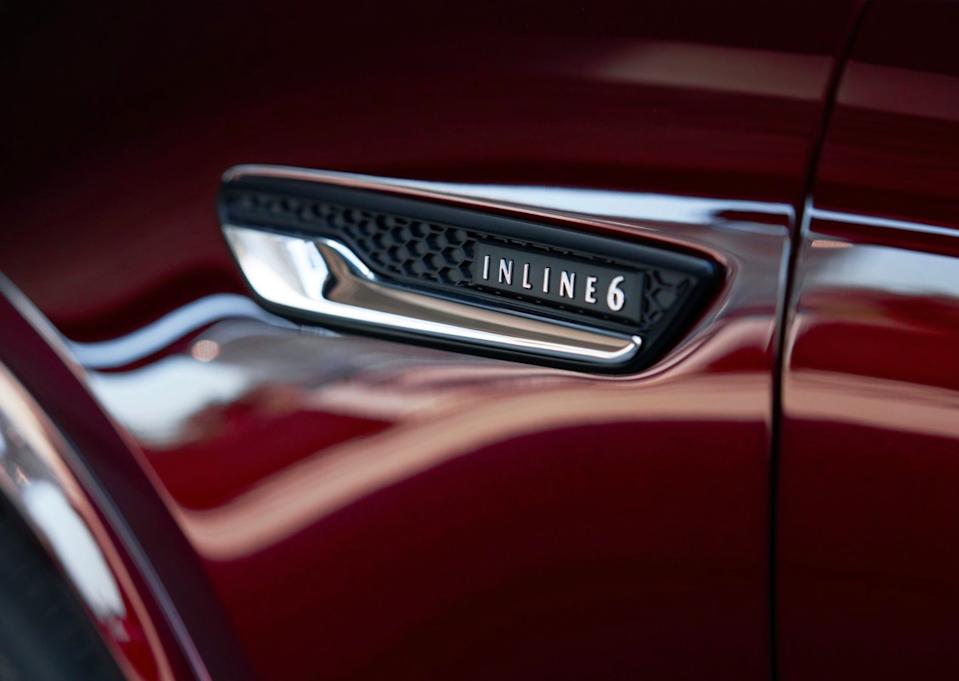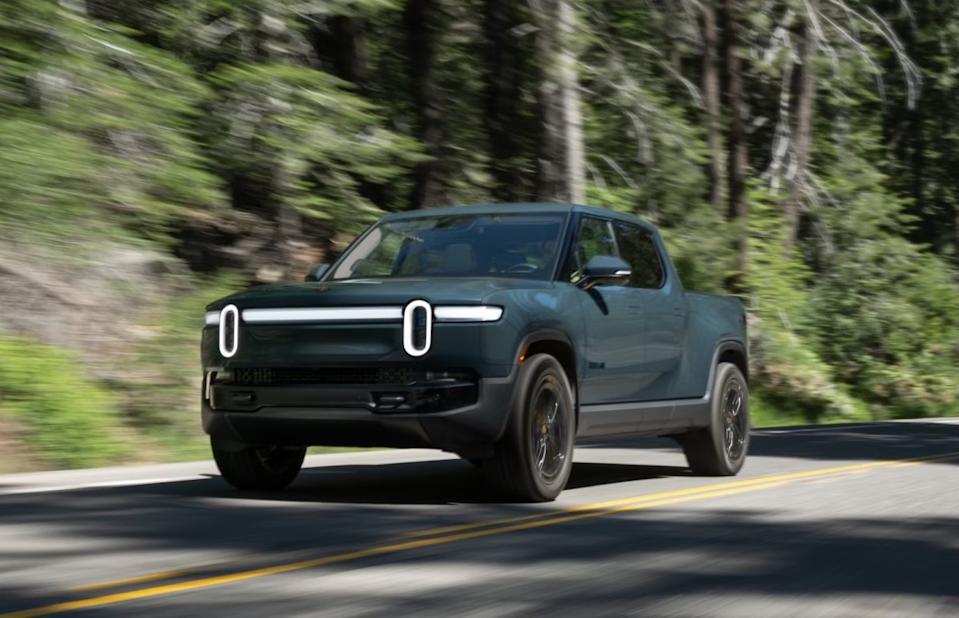
The very first time I hear the Gunther Werks Turbo fire to life, my ears perk up immediately. Nothing, and I very truly mean nothing, else on the road sounds anywhere the same as this car. Words will never do the soundtrack justice, yet I must try: Take a 993-generation air-cooled Porsche flat-six, bolt on a couple of tiny turbos, and turn the wick up a million percent—then throw in hints of the Gordon Murray T.50’s gear-driven V12, a little low-end grumble from a Mercedes-AMG V8, and finally garnish with Chewbacca’s banshee warble.
By the time I warmed up even a little bit to the unique cacophony, the moment arrived. Time to go out for a drive. Take a deep breath, remember that air-cooled Porsches use a floor-hinging clutch pedal, try to forget the prospect of battling traffic in a $1.5-million dollar restomod, and slot that pristine sculpture of a gear shifter into first.
What’s in a Name

Gunther Werks
The first thing Gunther’s rep told me about the Turbo, and every Gunther Werks build, made just about the most sense of any statement from any restomod company yet. Namely, that the whole concept of this company started with tires. Specifically what the largest size of tires might actually under the wheel arches of a 993-generation Porsche 911. This question in Vorsteiner Wheels CEO Peter Nam’s brain apparently resulted in the real-world answer of 295mm fronts and 335mm rears. And the rest, as they say, is history.
Fairly recent history, though, since the first Gunther Werks debuted in 2018. In the years that followed, typically at The Quail, A Motorsports Gathering during Monterey Car Week, Gunther Werks continually one-upped themselves. More power, a Speedster chop-top (which necessitated changing the original 400R’s name to simply the Coupe), and now the Turbo. The Turbo debuted in 2022, under the nickname Project Tornado.
As a name, Turbo sure works better—though I’m surprised Porsche hasn’t trademarked the term, given that Turbo in the P-car lineup no longer signifies anything remotely having to do with an actual turbocharger. Not so for the Gunther Turbo, as I quickly learned.
The usual fare holds true for this restomod: an aggressive redesign, carbon-fiber for just about every visible (and hidden) surface, a bored-out engine, and updated suspension and braking components to cope with the added power and greater cornering ability produced by modern tires.
For the Turbo, as my ears picked up immediately, the turbochargers matter most—for performance, but also to set Gunther at the forefront of the restomod scene. Because everyone can do a 4.0-liter air-cooled flat-six these days, apparently. So why not bolt on a pair of 48mm snails, one on each side? Rothsport Racing built up the engine with unique cylinder heads, pistons, and barrels to support a maxed-out Track mode that can pump an absurd 840 horsepower to the rear wheels.

Gunther Werks
I start out in Comfort mode, though, selected by a 24-carat gold-plated knob on the steering wheel (which matches 24-carat gold for the tachometer surround—because why not). Comfort limits the engine to “just” 513 horsepower. A pittance, really, until you realize that with all that carbon fiber, and forged magnesium wheels, and lightweight Brembo brakes, and electronically adjustable JRZ Proactive coilovers, the Turbo tips the scales at a relatively svelte 2,790 pounds.
So for context, just in Comfort, the Turbo’s power-to-weight ratio winds up somewhere between a Dodge Viper and a Ferrari 458 Speciale. I also fiddled with a second knob, this time on the dash plate to the left of the steering wheel, and chose the softest suspension setting. Might as well start out takin ‘er real easy, gimme some time to adjust.
But the soundtrack barking out from behind my skull simply made any adjustment period laughable. The main problem for boosted air-cooled engines centers, quite literally, around stress to the cylinder head between the valves, which heat only exacerbates. And turbochargers only exacerbate heat soak, so to combat against any ill effects, Gunther Werks decided to install a flat fan on top of the engine that runs via a gear-driven system à la the 935 race car.

Gunther Werks
The gears for the fan, the turbos spooling up, wastegates letting off steam, the hot flat-six engine itself, and the Inconel exhaust tips all produce a chattering, a screaming, a guttural ululation that bears repeated exploration into the higher end of the rev range. Luckily, despite the egregious power, Gunther stuck with a six-speed manual transmission and short gear ratios. So I spent the first few minutes just clicking up and down through gears, left foot finding the friction zone of the floor-hinging clutch pedal more quickly, even, than my right foot adjusted to making accurate and consistent throttle blips.
This has never happened before, as most manual gearbox enthusiasts will likely admit. But the Turbo’s engine just revs so snappily, individual throttle bodies feeding pressurized air quickly enough to rocket right up through the tach with the gentlest nudge of my right pinkie toe. I typically needed to let the rpms drop a bit to nail a smooth downshift due to this impossibly quick throttle response that most turbo engines, quite simply put, lack.
But that fine muscle control required to blip on downshifts never translated to a twitchy response while in gear, somehow, once I started digging deeper into the throttle. Instead, an initial build of low-end torque—purposefully tuned to spool the small turbos up quickly—gives way to a swelling rush of glorious boost, predictably and confidently and lustily almost, as the screaming reaches a new chord, an octave higher with each passing digit on the way to a 7,800-rpm redline.
Related: You Won't Believe What Car I Just Took Backcountry Camping
Gnarly Yet Still Refined

Gunther Werks
Carbon-fiber body panels don’t just save weight, but also increase the reverberations inside the Turbo’s cockpit. The minimized mass still contributes to some of this car’s magic, though, by allowing the suspension to harness every last bit of tire grip without overtly forcing too much pressure through the shocks and springs. So instead of a ride that’s flat and necessarily harsh, which all the carbon and added chassis bracing might easily create, the Turbo actually breathes with the road and never sends jarring jolts back into the cockpit.
Be it covering ground at high speeds or low-speed cracks or even speed bumps (front-axle lift helps, too), the tires—the all-important tires—lack some of the rigidity of a Cup 2 or the like, and contribute to the fun. As do the continuous thread carbon-ceramic brakes, which outshine even the latest and greatest that Porsche sells today. Calling the Turbo a 993, despite the underpinnings and provenance and history, can eventually seem a little inaccurate.
And soon enough, I needed to step up to Sport mode. In the name of science. First, I spun the engine dial to ramp the boost pressure up to 1 bar (or 14.5 psi) which resulted in 650 hp and 518 lb-ft this time around. But I kept the suspension in the most comfortable setting for a few minutes. Alright, enough of all that. Yes, the Sport power level noticeably increases. But let’s do a few seconds in the mid-level suspension, then go whole hog into full Track settings and unleash all 840 horsepower while stiffening the dampers to the max. Time is money, as they say. Though my Gunther rep only once or twice needed to remind me of the sheer value of the car I was driving, increasingly confidently, through busy Los Angeles on a Tuesday.

Gunther Werks
In Track mode, the Turbo’s fury takes on another persona. Boost ramps up to 1.32 bar, or just over 19 psi. And the time-space continuum quickly becomes irrelevant. I kept clearing the road ahead, scanning for police while allowing gaps to open up so that I might hit full throttle. As much for the gut-punch and turbo wallop as to hear that engine at full cry. In the EV era, acceleration largely lacks drama—speed becomes irrelevant. But the right car, with the right setup, can bring back those old thrills from the time when 300 horsepower in a 3,000-pound car sounded just about right (Porsche 996, anybody?).
Then I glanced at the speedometer to the right of the tach and spied numbers far in excess of triple digits, just about launching into outer orbit. OK, time to dial it back in the name of sanity, safety, and maybe my driving record. But let me tell you, dear reader, the thrill still comes at any speed in a Gunther Werks Turbo. And not just with the tail-wagging fearsome jumpiness of a Maserati MC20, say, but with a sense of calm capability that so much drama from the engine largely belies.
Hydraulic steering probably contributes to that confidence, again a decision that keeps a $1.5-million restomod somehow in a different realm than most of the supercars and hypercars on the market today. Yes, Ferrari figured out electronically controlled power steering assist. Sure, a dual-clutch gearbox is *technically* faster. And hybridized or fully electric cars race against the clock better.

Gunther Werks
But there’s usually that last 1 percent of wizardry missing in the modern era, a little gap between actuality and emotional resonance. Whether the Ferrari breaks up the reverie by constantly beeping too much, or the 992.2-gen Porsche 911S carves through corners with too much ease, or the Lucid Air Sapphire simply pulls and pulls forever while the seats stay as comfortable as a cruiser sedan.
Not here, not behind the wheel of the Gunther Werks Turbo. A tiny car with a boosted engine, but a tiny car that I fit in quite well at six-foot-one thanks to the double-bubble roof and slim carbon bucket seats. Comfortable yes, but not a highway cruiser. Instead the Turbo begs for—or more accurately, demands—hard mornings in the canyons, more lateral g forces to match the unbelievable crescendo of power delivery, maybe even time on the racetrack to more fully test the limits of Gunther’s engineering, vision, passion.…
I wanted more time to push, more time to explore, more time to adjust. Ripping around and trying to shift the weight from front to rear, side to side, only goes so far over the course of a half-day drive. Maybe a night off, for my brain to adjust. Maybe a few weekends back-to-back to find nirvana required.
Related: Is the Lamborghini Temerario the First Fearsomely Fast Hybrid?
Thrilling Speed and Daily Engagement

Gunther Werks
But will any Gunther owners actually find those limits? And I don’t only mean reliability limits, given the challenge of creating so much power from “just” 4.0-liter of air-cooled displacement. (Apart from the water-to-air intercooler supported by a massive front radiator, that is.) Some of me hopes yes, but most of me believes no. If only because most of, if not all of, the self-selecting sample of buyers willing to shell out for a Gunther Werks Turbo probably lacks some of the gumption to explore those outer realms of possibility.
Hey, I understand, being swaddled in carbon-fiber from the dash face to the transmission tunnel—with those exposed shifter linkages—to the backseat waterfall all creates the impression of fragility. But I also got used to my carbon bicycle wheels taking a beating much quicker than expected. And in the event anything serious actually happens to a Gunther Werks, any typical Porsche mechanic can probably handle most little issues. Body damage represents more of a challenge, typically resulting in a return to the shop for new carbon-fiber panels, or new wheels, or that low-hanging front lip and splitter (despite the axle lift).
In reality, though I sensed the Turbo lusting for more, so much of the experience comes down to how this car makes every moment of driving more engaging than quite possibly anything else I’ve ever driven prior. More hardcore, gnarlier, visceral, raw—all the usual words again failing to do justice. Does the world need seven-figure restomods? Absolutely not. But with the Turbo, Gunther Werks delivered an absolute riot to drive, and equally a riot to just look at or listen to, maybe the only car I’ve driven yet that can match legit superbikes in terms of all-out batshit thrills. And that’s gotta count for something.
Gunther Werks Turbo Specs
Engine: 4.0L twin-turbo flat-six
Transmission: 6-speed manual
Horsepower/Torque: 840 hp/594 lb-ft
0-60: 3.3 seconds
Top Speed: N/A
Price: From $1.45 million
Related: Is the 2026 OCTA Defender Finally Worth Its Off-Roading Legacy?
Has the $1.5 Million Gunther Werks Turbo Really Reached Peak Porsche? first appeared on Men's Journal on Aug 7, 2025







Comments